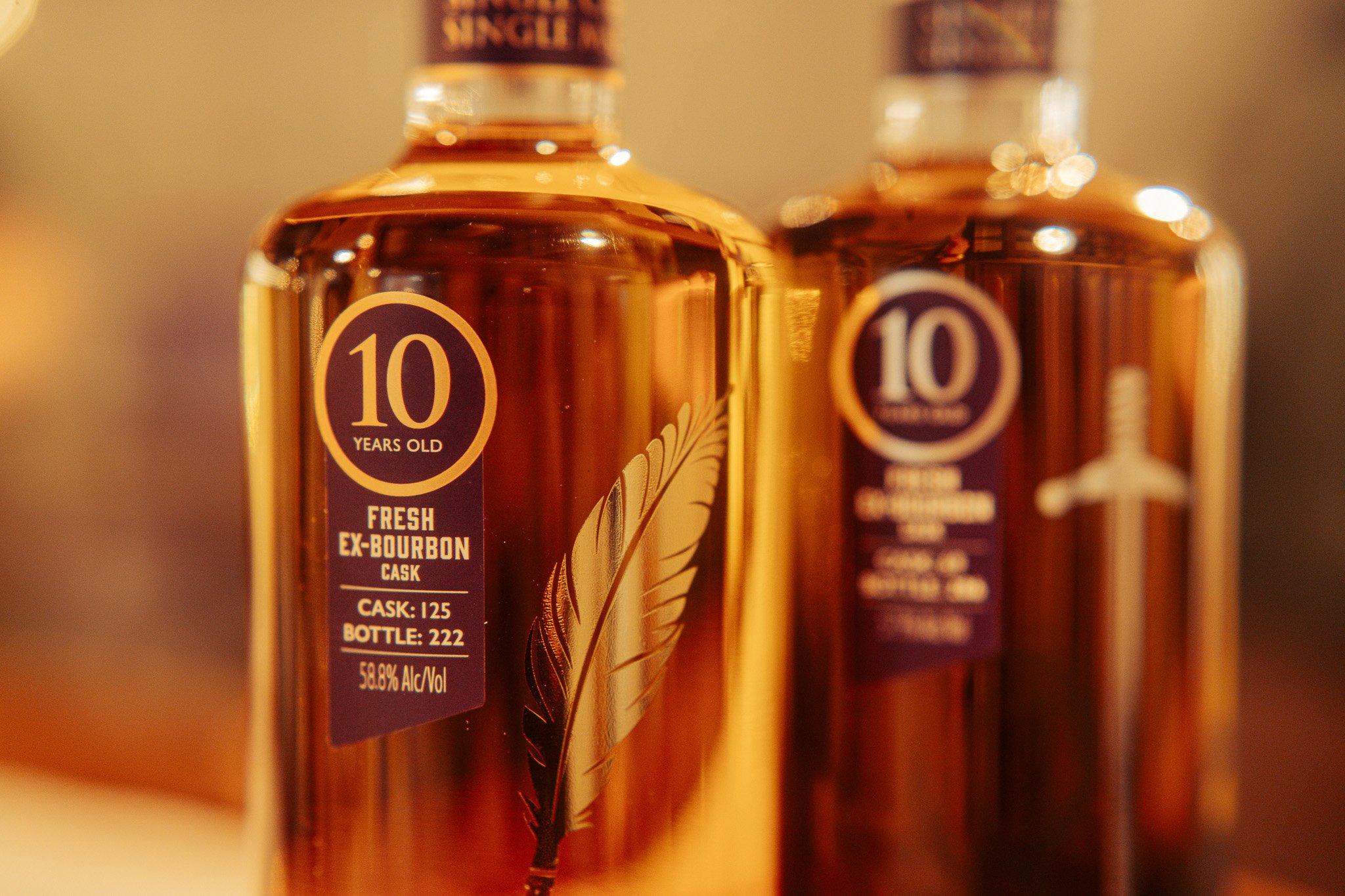The Barley mail-bag: letter of the month
Whisky is reinventing itself just as pop’s original chameleon did in the 1970s
Scotch? It’s the ever ch-ch-ch-changing David Bowie of whisky, but underneath the new eyeliner and glitter it’s still the real deal
Nick Morgan is a man with great taste (‘Scotch is striding to disaster’, May, 2023) – not only in whisky; he knows his music too. I once had the pleasure of seeing him perform with his band during the celebration of the 200th anniversary of the Lagavulin distillery. You could say he is somewhat of a hero to me. Being a whisky romantic of more than twenty years, I matured during the heyday of Mr. Morgan’s reign over the world of (single malt) whisky.
It was with some surprise that I read Mr. Morgan’s words in Barley, about Scotch being in an identity crisis. It was amusing to see him conjur Ray Davies to the stage again, even though it was in a feature about whisky. For me, I was, and still am, a devotee of David Bowie. If there ever was an artist that made a big deal out of re-inventing himself, it was the great Chameleon of Rock Music (even though Bowie disliked that moniker, because a chameleon adapts and Bowie did quite the opposite).
‘For years the Rock ‘n roll of Scotch single malt whisky was a pretty straightforward thing. You had spirit driven (bourbon matured) expressions or the more fancy sherried examples. You had the bad boys (peated!) in the one corner, or the conservative (good old Campbeltown) in the other’
Those who know their history remember that in 1972 Bowie shook up the established norms with “Starman” and the brilliant album Ziggy Stardust and the Spiders from Mars. People dubbed it ‘Glam rock’ and a new genre was born. A few years later he had a conversation with his own hero, John Lennon, and inquired of the former Beatle what his thoughts were about Glam rock. To which Lennon famously replied: ‘It’s great, but it is just rock ‘n roll with lipstick on’.
For years and years the Rock ‘n roll of Scotch single malt whisky was a pretty straightforward thing. You had spirit driven (bourbon matured) expressions or the more fancy sherried examples. You had the bad boys (peated!) in the one corner, or the conservative (good old Campbeltown) in the other. The division between good and really good was mostly defined by age. Finishing was a novelty, charming but harmless. More or less, I am saying the same thing as Mr. Morgan does in his overthinking. The distillery was the centre of it all, and they would put out what they thought was best. I admit that my romantic moods sometimes make me spend more money than I should just to buy an older expression of clean, naked Caol Ila at this or that auction.
‘Today I can jump in my car and travel past several distilleries in The Netherlands and find not only that they make whisky, but they are pretty damn good at it too. More international producers are willing to do it their way. Not copy Scotch, but be inspired by it’
On trip in 2011 with fellow whisky romantics to discover more of what Speyside had to offer, we parked our car on the old Macallan distillery parking lot. We were too early for a tour and too late to score any distillery exclusives. We chatted a little, until we noticed a man working in his office adjacent to the distillery shop. An interesting conversation followed. The blender was checking some samples for vatting a new expression of The Macallan. His observations were clearly foretelling the future.
“We do not create the best whisky we think we can make, but we create the best whisky we know will be appreciated in a certain market.” As a Dutchman acquiring bottles from all over the globe, I know a bottle for the German market can be quite a different whisky compared to an expression destined for Asia. Was it a bad thing? We shrugged. Time would tell.
Turns out, Scotch whisky experienced a growth not seen since the crazy Pattison days (but let us pray the outcome will not be equally disastrous). And in the wake of Scotch, the world followed more aggressively than it ever did. As Mr. Morgan points out, the Japanese were quick to catch on, and if you wanted to go exotic twenty years ago, you would indeed pick up a Yoichi or Yamazaki, when they were not priced like crown jewels.
But today? Today I can jump in my car and travel past several distilleries in The Netherlands alone and find that not only they make whisky, but they are pretty damn good at it too. The good thing is, more and more international producers are willing to do it their way. Not copy Scotch, but be inspired by it.
What we are seeing today in the Scotch whisky industry sometimes worries me. The lazy adding of colour or taste via cask finishes (or ‘enhancement’) is cheap theatrics. But there are producers out there who are willing to take a page out of the World Whisky Book. I applaud them, and support them too, by buying a bottle and sharing the stuff with friends. Spreading the gospel. And it does not even have to be all malt we should be focusing on. If the consumer likes rye whisky, why should a Scottish distillery stay away from it? I was not particularly impressed by a 2022 release of Highland Rye by the new Arbikie Distillery, but I give them 100 points for trying.
‘When done with integrity, I truly do not mind if some producers put some glitter on their expressions. Be a Rebel, Rebel, as long as at the end of the day, Scotch is still Scotch’
Old masters also try their hands on new directions, even within the more traditional box. The Tomatin Cù Bòcan Creation series is not to be overlooked. Their Columbian oak finish was a breath of fresh air to me. Someone with knowledge knew just how long to keep the whisky in the cask before it would lose contact with its roots. It is fitting the ‘lipstick-mold’ perfectly, and you know why? Because underneath the make-up you can still detect it is Scotch malt whisky. That is where we should draw the line. Rock, Glam rock, all birds of the same feather.
When done with integrity, I truly do not mind if some producers put some glitter on their expressions. Be a Rebel, Rebel, as long at the end of the day, Scotch is still Scotch. It just takes a leap of faith, even from whisky romantics like Mr. Morgan and myself. When done right, it can lead to wonderful results. Even Nick Morgan’s beloved Lagavulin tried their hands on Mezcal and Brandy finishes. Not sticking to a 200-year-old mantra. New directions, towards the horizon and beyond.
Let us drink to breaking the mold, ever so slightly, and staying relevant.
Tom van Engelen, The Netherlands.
Want to have your say on Barley? We welcome your feedback and will publish the best letters. Email us at hello@barleymagazine.com Letters may be edited for publication.




